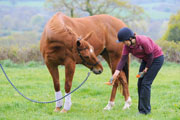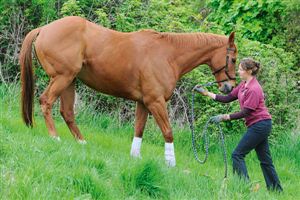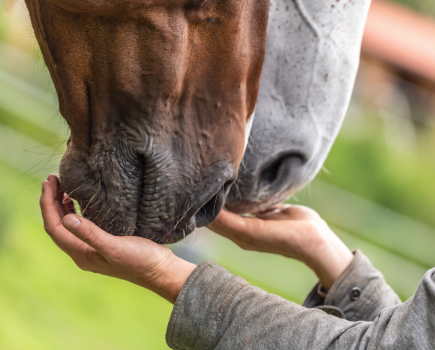The pilates concept was invented nearly 100 years ago by a man called Joseph Pilates and his wife Clara. They developed the series of exercises to improve flexibility, core strength and body awareness while working with ballet dancers.
Since then the regime has received worldwide acclaim and you will, no doubt, find there’s a pilates class advertised at your local gym. More recently, classes specifically aimed at horse riders have become popular so the next logical step was to develop a course for the horse himself.
The exercises have been adapted by two experts in equine biomechanics on the back of a great deal of scientific research and are proving popular with equine physiotherapists across the country who have continued to develop the programme on offer to horses.
It was Grand Prix dressage rider and equine vet Hillary Clayton who first applied pilates to horses, with the help of physiotherapist Narelle Stubbs.
We speak to ACPAT chartered physiotherapist and equine pilates practitioner, Celia Cohen, who advises how you can give some mobilising exercises it a go:
MOBILISING EXERCISES
Before you start these stationary, mobilising exercises, have your horse in a headcollar and leadrope and make sure he’s standing square. If your horse cheats and moves his feet when performing any of the exercises, don’t reprimand him, just put him back so he’s standing square and try again. You’ll be surprised how quickly he gets the hang of what he has to do.

Chin to girth, mobilising exercise
1. Chin to fetlock
Using the temptation of a succulent carrot, ask your horse to reach down to the outside of his fetlock. Let him nibble on the carrot for five seconds so that he holds the position. Only take your horse down as far as he’s willing to go.
Over time you’ll find he’ll gradually become more flexible, but don’t be in a hurry to get him down to the ground too soon. Repeat this rounding exercise an equal number of times on both sides of your horse.
“Some people ask their horses to reach straight down between their legs,” says Celia, “but I like to incorporate a little sideways bend because horses are always stretching straight down when grazing out in the field, so it seems a bit pointless to do it as an exercise.”
2. Chin to girth
Stand at your horse’s shoulder and ask him to bend toward his girth around you, again using the lure of a carrot. By standing inside your horse’s neck you should be able to control the angle of the bend – you want to try to get a rounded curve all the way along your horse’s neck.
To do this make sure his ears stay straight – if he’s tilting his head he’ll be bending from his poll rather than through his neck.
If this is the case, your horse is probably struggling, so try asking for less bend.
This lateral bending exercise lifts the abdominals and should be performed to the left and to the right an equal number of times.
3. Chin toward hock
Next ask your horse to bend round towards his hock. Take a couple of steps back away from your horse before you encourage him to stretch round and down. If you stand too close you’ll find you get too much movement at the base of the neck.
Once again, what you’re aiming for is a nice even curve.
This exercise targets the main abdominal muscles, paraspinal muscles, hip flexor and pelvic stabiliser groups.
4. Reaching up
By asking your horse to extend his neck up and forwards you’re opening his poll. This is very important for horses who spend a lot of time working in a rounded outline.
As well as being a mobilising exercise, this also helps strengthen the pectoral muscles, which play a crucial role in allowing the horse to carry himself through downward transitions and when landing after a fence. When a horse has weak pectoral muscles, he’ll lean on the rider’s hands for support – if this sounds familiar you need this exercise.









